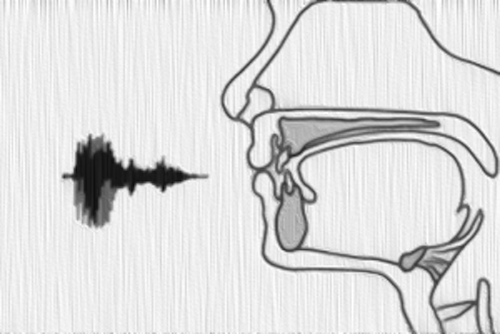Towards a Poetics of the Phatic (Part 2)

In one sense, the phatic is perhaps the oldest and most fundamental dimension of poetry. The impulse to speak in meter or rhyme, for example, is relatable to the infant impulse toward babble, the delight taken in hearing oneself—or others—speak. Many of the same features Jakobson assigns to the poetic function (repetition, soundplay, etc.) are integral to phatic utterance. In fact, one might consider the phatic and poetic functions to be closely linked, in the same way that the conative and emotive, or the metalingual and referential, are linked: the objectives of one are intimately linked to the mechanisms of the other.
One can also point to specific instances throughout poetic history in which the phatic aspect of language is integral to the production of certain textual effects. In John Skelton’s ribald, metrically erratic, rhyming verses at the first half of the sixteenth century, the “content” of the poems has as much or more to do with their own perseverative inelegance as with whatever their referential focus might be. But it is not until the advent of modernism that something like a cohesive phatic poetics begins to emerge on a larger scale, most obviously in the work of “anti-art” movements like Dada, or the procedure-driven lettrist mechanics of Oulipo. Other styles and movements that draw heavily on the phatic might include:
• Minimalism (Aram Saroyan, Clark Coolidge)
• Found art (Bern Porter)
• Ironic Pseudoreference (John Ashbery, Second- (or Third-, or Fourth-, etc.) Generation New York School)
• some Language poetry
• Flarf
• Conceptual Poetry (?)
Many of the contentious divisions between various “camps” of poetry over the last half century or so might be characterized precisely by a conflict between poetic orientations that are alternately mimetic/referential, expressive/emotive, pragmatic/conative, or even objective/“poetic” in the high-modernist and Jakobsonian formalist sense, and those that are predicated in some way on a poetics of the phatic.
A phatic poetics takes as its starting point the materials of art, and the channels through which those materials are arranged, transmitted, disseminated.
Yuri Tynianov’s discussion of verse equivalence is perhaps the earliest systematic formulation of a phatic theory of poetics. Cf. also Nate Mackey on “noise,” etc.
The phatically oriented work draws attention to the conditions of its production and reception. Emphasis is not primarily on the subjectivity of the producer, nor the effect the work has on the audience, nor the veracity with which the work reproduces some external set of conditions, nor even on an internal system of order governing the work itself (Jakobson’s “message”). Rather, it is on the fact of the entire process involving the artist, audience, world, work, and the terms of its intelligibility.
Emphasis on the total constellation of these various factors entails the conspicuous blocking of one or more of the factors considered individually:
1) The mimetic dimension is diminished precisely by means of an exaggerated performance of the mechanics of reference. In Wallace Stevens’s or John Ashbery’s work, for example, eloquent phrasal structures built around elaborate grammatical and rhetorical scaffolding draw attention to the difficulty of distilling a unified core of reference.
2) Expressive: ironic, blank, or otherwise denatured use of first-person emotive codes. Tao Lin comes to mind.
3) Pragmatic: imperatives invested with a poignant conative urgency, for example, are deployed in an undermotivated fashion, so that the reader is aware of an “appeal,” but not of the specific terms of said appeal.
4) Objective: structural parallelisms and other aspects of verbal design are highlighted, as in the poetic function “proper,” but without the corresponding access to a hermeneutics of significance. Cf. Jakobson’s ingenious analysis of the Eisenhower presidential campaign slogan (I LIKE IKE), in which the triple repetition of the vowel comprising the first-person pronoun, along with the double repetition of Eisenhower’s nickname, performs a psychological commentary on the relation of the candidate to his supporters and vice versa. In a phatic version of this process, the interpretative possibilities are radically restricted, as in Robert Grenier’s Sentences, in which arbitrary patterns are isolated as such (“the horse wrestles / the hoss wrestlers”). Cf. also Cage’s mesostics, etc.
Such phatic gestures are emblematic of many, if not most, of the strategies of the poetic avant-garde over the past century or so. Or, more accurately, the increase over the past hundred years of critical awareness of the “poetic function” in its various guises (Russian Formalism, New Criticism, etc.) has had the effect of making possible—or even inevitable—a series of phatic rehearsals of the motions associated with that critical-poetic sensibility.
One reason—the main reason?—we don’t have a clearly established phatic critical orientation is that is difficult to conceptualize what exactly such a tradition would consist of, beyond mere observation of the fact of phatic phenomena as such. Whereas New Critical close reading holds the promise of diverse instances of discovery or “decoding,” and pragmatic, mimetic, and expressive readings such as those advanced by Marxist criticism and psychoanalysis attempt to locate the text’s importance in relation to extraliterary concerns, the idea behind a generative “phatic reading” remains hazy—unless it is a reading that itself operates at a phatic level, in which case we would appear to have moved from the domain of criticism to that of creative (or maybe “uncreative”) writing. On the other hand, the prospect of filling in this conceptual gap is invigorating. It's a field, I'd argue, that's still ripe for exploration.
K. Silem Mohammad is the author of several books of poetry, including Deer Head Nation (2003), A Thousand...
Read Full Biography

